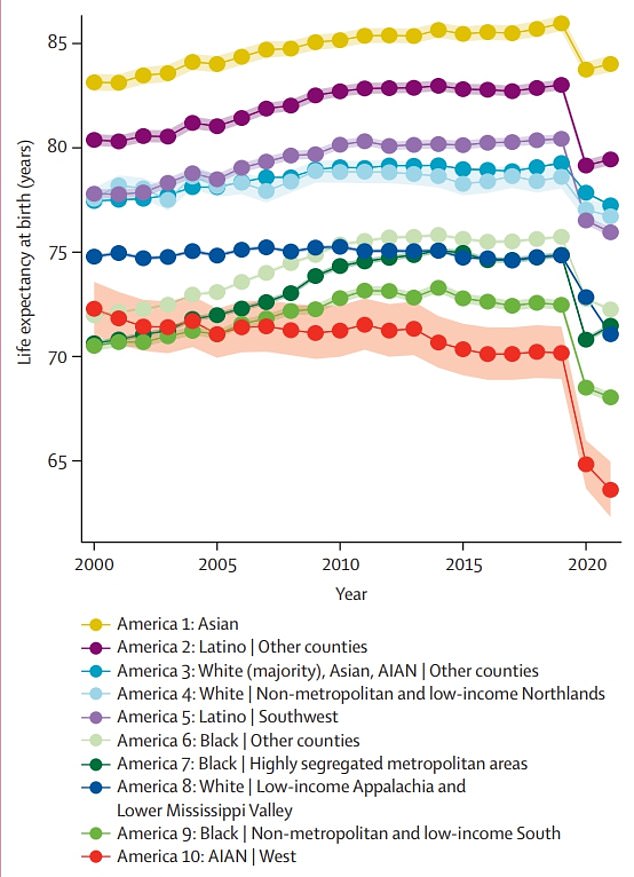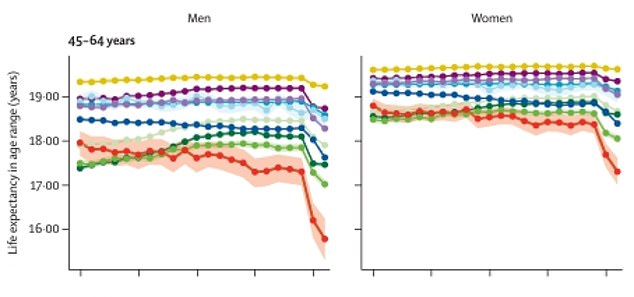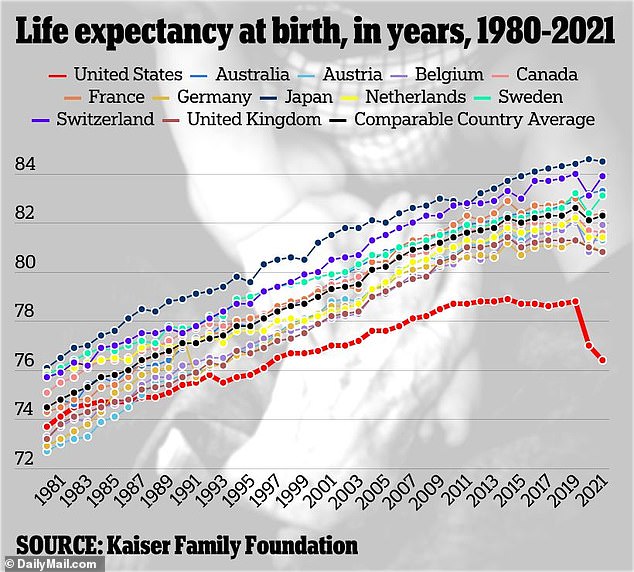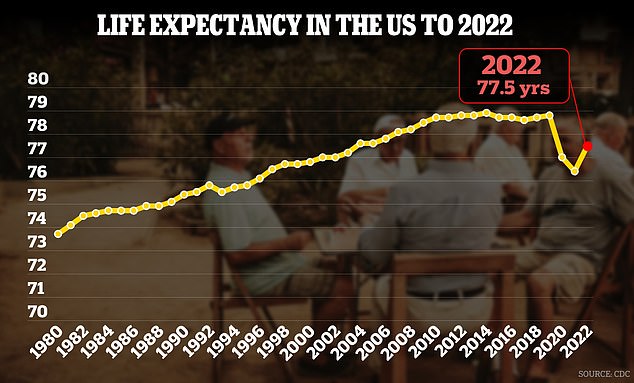If you are poor, a minority, and live in the southern or western United States, you are likely to die up to 20 years earlier than your peers.
This is the shocking conclusion of a study published in the lancet which tracked changes in life expectancy by geography, income and ethnicity over the past two decades.
It found that the gap between the longest- and shortest-lived groups had increased by about 7.5 years in just two decades, up from a gap of 12.5 years in 2000.
Nationally, the United States has a life expectancy of 77.5 years, according to the latest estimates from the CDC.
But progress has stalled in recent years: Life expectancy across the country stagnated and then fell during the Covid pandemic, before recovering slightly.
Native Americans in the West lived the shortest overall, with an average life expectancy of 63.6 years in 2021.
Poor, rural, black people in the South were only a few years ahead, with a life expectancy of 68, while poor white Americans in the Appalachian region had the third-lowest life expectancy with 71.1 years.
At the other end of the scale, Asian Americans had the highest life expectancy at 84 years, Latin Americans not in the South had the second highest at 79.4 years, and Americans in majority white counties they had the third highest at 77.2 years.
The graph above shows life expectancy in the US by year from 1980 to 2022. There has been a slight increase in the most recent year for which data is available.
For him studyDrawing on data from the National Vital Statistics System and population estimates from the National Center for Health Statistics, researchers divided the United States into what they called the ’10’ Americas, based on geography, income and ethnicity.
They were made up of counties with an Asian and Native/Pacific Islander (AIAN) minority population; Latinos spread throughout the country and those who live in the western and southern United States; majority white counties, white rural counties, and white people in low-income counties.
Others included African Americans across the country, in rural counties and in segregated cities; and the AIAN people in the central and western United States.
Researchers blamed the large gap in life expectancy on the division of resources, discrimination in society and barriers to accessing education and health care.
Lead author Dr Christopher Murray, a demographer at the University of Washington, Seattle, said: “The scope and magnitude of health disparities in American society is truly alarming in a country with the wealth and resources of the United States. “.
‘These disparities reflect the unequal and unfair distribution of resources and opportunities that have profound consequences on well-being and longevity, especially among marginalized populations. ‘

The graph above shows life expectancy since 2000 in the 10 groups created by the study.

The above shows the life expectancy of men and women from 45 to 64 years.
He added: “Policymakers must take collective action to invest in equitable health care, education, and employment opportunities and challenge the systemic barriers that create and perpetuate these inequalities so that all Americans can live long, healthy lives, regardless of where they live.” live and their race”. , ethnicity or income.’
Additional results from the study showed that white Americans living in northern areas had the fourth highest life expectancy, at 76.7 years, while Latinos in the Southwest had the fifth highest at 76 years.
And African Americans in highly segregated cities had a life expectancy of 71.5 years on average.
The study is the second installment in the series, after the first was published in 2006 and divide Americans into eight groups.
Over time, the latest study showed that life expectancy increased in nine out of 10 United States between 2000 and 2010.

Nationally, the United States has a life expectancy of 77.5 years, according to the latest estimates from the CDC.
But over the next decade it only increased by six in 10 Americans, and at a much slower pace.
Black Americans showed the largest increase in life expectancy over the study period, increasing by up to 3.7 years in that time, although improvements have plateaued since 2019.
They have also gone from being the group with the lowest life expectancy in the country.
The researchers acknowledged that limitations of the study include that there were large disparities in life expectancy between people in each study group.
And the authors said there were considerable differences in life expectancy between counties, even among those with the same ethnic groups.


